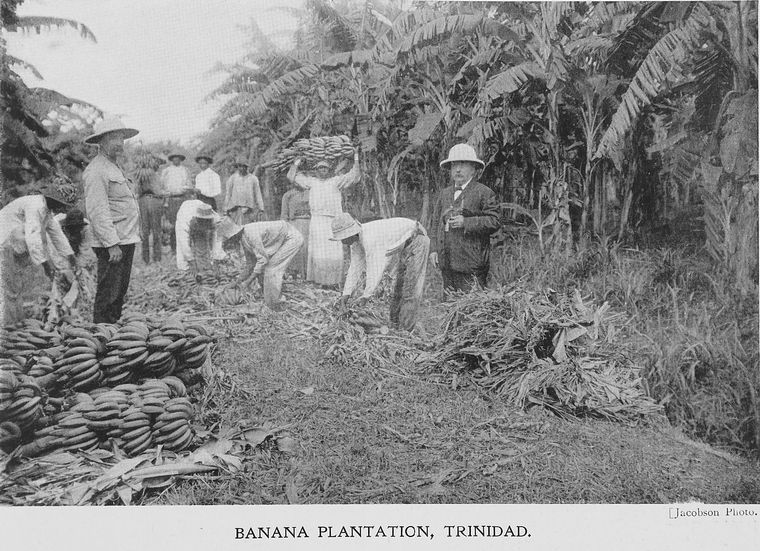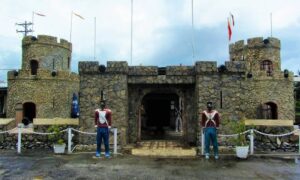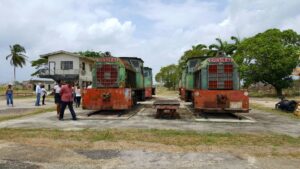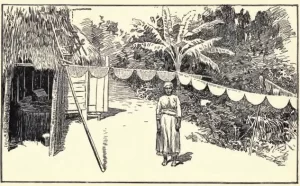In the sun-soaked, picturesque landscapes of Trinidad, a captivating story unfolds—a story of resilience, exploitation, and eventual liberation. The history of Trinidad’s plantations is a tapestry woven with threads of sugar, slavery, and emancipation. Within this intricate narrative, we unearth the profound influence these elements had on shaping the island’s past and, indeed, its present.
Contextual Significance
To truly grasp the essence of Trinidad’s plantation history, one must delve into the profound significance of sugar, slavery, and emancipation in this Caribbean jewel. Sugar, once a luxury, became an economic powerhouse that laid the foundation for Trinidad’s development. The allure of sugar drew colonists, plantations, and a dark legacy of human exploitation through slavery.
Sugar plantations, with their sprawling estates and labor-intensive cultivation, beckoned enslaved Africans to these shores. Their indomitable spirit and unwavering determination became intertwined with the sugar cane fields, leaving an indelible mark on Trinidad’s history. The plantations thrived on the sweat and toil of the enslaved, their knowledge of agriculture, and their enduring resilience.
Emancipation, a beacon of hope, eventually illuminated the path to freedom for Trinidad’s enslaved population. Yet, it marked not just the end of physical shackles but the beginning of a journey fraught with challenges and hardships.
The Interconnectedness of Themes
This article embarks on a journey to explore the interconnectedness of these themes—sugar, slavery, and emancipation. It ventures into the heart of Trinidad’s plantation history, where these elements converged and diverged, leaving a lasting imprint on the island’s identity.
As we navigate through time and history, we will unravel the stories of those who toiled in the cane fields, the abolitionists who fought for justice, and the legacy that still reverberates today. Join us in uncovering the layers of Trinidad’s past, where the sweet allure of sugar, the painful specter of slavery, and the triumphant spirit of emancipation are intricately woven together, waiting to be discovered.
Historical Background
Trinidad’s captivating history as a sugar-producing island traces its roots to the early days of European colonization. The lush, fertile soil and tropical climate proved to be a perfect match for sugar cane cultivation. Here, in the Caribbean, sugar would soon become a sought-after commodity, driving a demand that would shape the course of Trinidad’s history.
Early Sugar Cultivation
The story begins in the 18th century when the island was still under Spanish rule. Sugar cane was initially introduced by the Spanish colonists, who recognized the agricultural potential of Trinidad’s land. However, it wasn’t until the British arrived in the late 18th century that sugar production truly began to flourish.
Under British colonial influence, sugar cultivation rapidly expanded. Vast plantations sprung up across the island, each one a testament to the economic promise of this “white gold.” The process of refining sugar from cane required extensive labor and expertise, setting the stage for the next pivotal chapter in Trinidad’s history.
Sugar Plantations and the Island’s Economy
Sugar plantations soon became the backbone of Trinidad’s economy. The island’s fertile plains were transformed into sprawling estates dedicated to sugar production. This shift brought significant wealth to the island, attracting planters, merchants, and investors eager to capitalize on the sugar boom.
Trinidad’s economic landscape began to revolve around the production, processing, and export of sugar. The revenue generated from sugar exports fueled the development of infrastructure, towns, and trade networks. The island was no longer a peripheral outpost; it had become a hub of economic activity, all driven by the sweet allure of sugar.
The Introduction of Slavery to Meet Labor Demands
The exponential growth of the sugar industry came at a high human cost. The demand for labor to work the sugar plantations was insatiable. To meet this demand, the institution of slavery was introduced to Trinidad. Enslaved Africans were forcibly transported to the island, marking the darkest chapter in its history.
Enslaved Africans endured unimaginable hardships in the sugar cane fields. They were subjected to grueling labor, harsh living conditions, and brutal treatment. Yet, their resilience and determination would become an integral part of Trinidad’s plantation history, as they played a pivotal role in sugar cultivation and the overall economy.
In this crucible of exploitation and suffering, Trinidad’s plantation history was irrevocably shaped. The nexus between sugar, slavery, and the island’s economic prosperity would set the stage for the struggles and transformations that lay ahead, ultimately leading to a quest for emancipation and a brighter future.
The Impact of Slavery
The impact of slavery on Trinidad’s sugar plantations was profound, leaving an enduring legacy that still resonates today. To understand the depth of this impact, we must delve into the harsh conditions endured by enslaved people, their indispensable contributions to sugar production, and the acts of resistance that marked their struggle for freedom.
Harsh Conditions of Slavery on Trinidad’s Sugar Plantations
Life on Trinidad’s sugar plantations was characterized by brutal and inhumane conditions. Enslaved people were subjected to arduous labor under the scorching Caribbean sun, working long hours in the sugar cane fields. They lived in cramped and squalid conditions, often in barracks, with minimal provisions for their well-being.
Physical abuse was distressingly common, with overseers using violence as a means of control and coercion. Families were torn apart as individuals were bought and sold like commodities. The psychological toll of slavery was equally devastating, as the enslaved were stripped of their humanity and subjected to a dehumanizing system.
Contributions of Enslaved People to Sugar Production
Despite these harrowing conditions, enslaved people played an indispensable role in Trinidad’s sugar production. Their deep knowledge of agriculture and cultivation techniques, passed down through generations, was instrumental in ensuring the success of sugar plantations. They possessed the expertise required to grow, harvest, and process sugar cane effectively.
Enslaved individuals also contributed to the island’s cultural and culinary diversity. Their heritage and traditions, including their agricultural practices and culinary skills, left a lasting imprint on Trinidad’s culture. Many aspects of Trinidadian cuisine, such as the use of spices and cooking methods, owe their origins to the culinary traditions of enslaved Africans.
Examples of Resistance and Uprisings Among the Enslaved Population
In the face of oppression, the enslaved population of Trinidad exhibited remarkable resilience and resistance. Throughout the island’s history, there were numerous acts of defiance and uprisings. These included:
- The 1813 Christmas Uprising: Enslaved Africans, led by a charismatic figure named Daaga, initiated an uprising on Christmas Day in 1813. Their revolt shook the island, highlighting the discontent and desire for freedom among the enslaved population.
- Petit Valley Rebellion (1823): Enslaved people in Petit Valley rebelled against the harsh conditions and mistreatment, staging a significant revolt that challenged the status quo.
- Runaway Communities: Some enslaved individuals chose to escape from plantations and establish their own communities in the rugged and less accessible areas of the island, where they could live independently.
These acts of resistance were courageous expressions of the longing for freedom and justice. They sowed the seeds for the eventual push towards emancipation.
In examining the impact of slavery on Trinidad’s sugar plantations, we confront a legacy of suffering and resilience. The contributions of the enslaved to sugar production and their struggles for liberation are integral parts of the island’s history, reminding us of the enduring spirit of those who endured the harshest of conditions in pursuit of freedom.
The Road to Emancipation
The road to emancipation in Trinidad was a long and tumultuous journey marked by various factors, movements, and significant events that contributed to the ultimate abolition of slavery. This transformative process was driven by a combination of internal and external forces, reflecting the changing attitudes towards slavery and the persistent resistance of the enslaved population.
Factors and Movements Leading to Abolition
- Abolitionist Movements: The global abolitionist movement gained momentum in the 18th and 19th centuries, with voices advocating for the end of slavery. Abolitionists in Britain and other European nations played a crucial role in influencing public opinion and pushing for legal changes.
- Economic Shifts: Economic factors also played a role. Changes in the global economy, including the decline in the profitability of slavery, made the institution less economically viable.
- Enslaved Resistance: The persistent resistance of enslaved individuals, through acts of rebellion and everyday acts of defiance, highlighted the inhumanity of slavery and drew attention to their plight.
- Enlightenment Ideals: The Enlightenment ideals of liberty, equality, and human rights began to influence political discourse, challenging the morality of slavery.
- Legislative Changes: Legislative changes in Britain, such as the Slave Trade Act of 1807 and the Abolition of the Slave Trade Act of 1833, signaled a shift towards the eventual abolition of slavery in British colonies.
The Emancipation Proclamation and its Effects on Trinidad
The pivotal moment in Trinidad’s journey towards emancipation came with the Emancipation Proclamation of 1834. This proclamation, enacted by the British government, declared the immediate and unconditional freedom of enslaved individuals throughout the British Empire, including Trinidad.
The effects of the Emancipation Proclamation on Trinidad were profound. It marked the official end of slavery and the beginning of a new era for the island. Enslaved individuals, who had long yearned for freedom, were finally granted their liberty. However, the transition was not without its challenges.
Challenges Faced by Formerly Enslaved Individuals After Emancipation
While emancipation represented a monumental achievement, it also brought forth a set of formidable challenges for formerly enslaved individuals in Trinidad:
- Economic Disempowerment: Many newly liberated individuals lacked economic resources, land, or access to education, leaving them economically disadvantaged and dependent on plantation owners for employment.
- Social and Cultural Adjustments: The transition from slavery to freedom required significant adjustments in terms of social status, family structures, and cultural identity.
- Land Ownership: Access to land was a critical issue. Some former enslaved individuals were promised land, but this process was often fraught with delays and disputes.
- Labor Shortage: Plantation owners faced labor shortages after emancipation, leading to the introduction of indentured labor from India and China, further complicating the economic landscape.
- Struggles for Equality: Despite their newfound freedom, formerly enslaved individuals continued to face discrimination and social inequalities, reflecting the enduring challenges of achieving true equality.
In conclusion, Trinidad’s road to emancipation was a complex journey marked by a convergence of factors, including global movements, economic shifts, and the relentless resistance of the enslaved population. The Emancipation Proclamation of 1834 was a watershed moment that officially abolished slavery, but it was followed by significant challenges as formerly enslaved individuals navigated the path to freedom, equality, and a new chapter in Trinidad’s history.
Legacy and Aftermath
The legacy of slavery and the plantation system in Trinidad left an indelible mark on the island’s social, economic, and cultural landscape. Even after emancipation, the echoes of the past continued to shape Trinidad’s trajectory.
Lasting Effects of Slavery and the Plantation System
- Social Stratification: The social hierarchy established during slavery persisted in the post-emancipation era, with formerly enslaved individuals often facing discrimination and inequality. This legacy of social stratification continues to influence Trinidadian society today.
- Economic Dependency: The sugar industry had been the economic backbone of Trinidad, and the transition away from a plantation-based economy was challenging. Many formerly enslaved individuals remained economically dependent on plantation owners, perpetuating a cycle of economic inequality.
- Cultural Diversity: The cultural diversity resulting from Trinidad’s history of slavery and indentured labor is a lasting legacy. It enriched the island’s cultural tapestry, leading to the vibrant mix of African, Indian, Chinese, European, and indigenous influences that define Trinidad’s culture today.
Evolution of the Sugar Industry
In the post-emancipation era, the sugar industry underwent significant changes as it adapted to new labor dynamics and economic realities:
- Indentured Labor: To address the labor shortage caused by emancipation, Trinidad turned to indentured laborers from India, China, and other regions. This diverse influx of labor reshaped the demographic and cultural composition of the island.
- Diversification: Plantations diversified their crops, moving away from exclusive sugar cultivation to include crops like cocoa, coffee, and citrus fruits. This diversification helped stabilize the island’s economy.
- Consolidation: Over time, sugar plantations consolidated into larger estates, concentrating wealth and power in the hands of a few landowners.
Notable Figures and Events in Post-Slavery Trinidad
Several notable figures and events played crucial roles in shaping post-slavery Trinidad:
- Cipriani and Labour Movements: Arthur Cipriani, a prominent Trinidadian leader, advocated for workers’ rights and played a pivotal role in the labor movements that sought to improve the conditions of plantation workers and achieve greater economic justice.
- Oil Discovery: The discovery of oil in Trinidad in the early 20th century had a transformative effect on the island’s economy. Oil revenue became a major driver of economic growth and development, gradually diminishing the sugar industry’s dominance.
- Independence: Trinidad and Tobago gained independence from Britain in 1962, marking a significant step towards self-governance and self-determination. This milestone was a crucial turning point in the nation’s history.
- Cultural Expressions: The legacy of slavery and the plantation system is evident in Trinidad’s rich cultural expressions, including Carnival, music (such as calypso and steelpan), and diverse culinary traditions that reflect the multicultural heritage of the island.
In conclusion, the legacy of slavery and the plantation system in Trinidad reverberates through its society, economy, and culture. While emancipation represented a crucial step towards justice, the island faced ongoing challenges related to social inequality and economic dependency. The evolution of the sugar industry and the contributions of notable figures and events have shaped the post-slavery history of Trinidad, leading to a complex and dynamic nation with a unique cultural identity.
Contemporary Significance
Remembering Trinidad’s plantation history holds great importance in today’s context. It serves as a crucial reminder of the island’s complex past and its enduring impact on Trinidadian society, culture, and identity. Understanding this history allows us to navigate the challenges and opportunities of the present while building a more inclusive and equitable future.
Relevance of Plantation History Today
- Social Justice and Equality: Trinidad’s plantation history reminds us of the struggle for social justice and equality. Acknowledging the injustices of the past is essential for addressing present-day inequalities and promoting a more inclusive society.
- Cultural Diversity: The multicultural influences from Trinidad’s history of slavery and indentured labor continue to shape the island’s rich cultural diversity. Recognizing this heritage fosters cultural appreciation and intercultural understanding, which are vital in today’s globalized world.
- Identity and Heritage: Understanding plantation history contributes to a sense of identity and heritage for Trinidadian citizens. It allows individuals to connect with their roots, fostering a deeper appreciation of their ancestry and cultural traditions.
Preservation and Education Efforts
Efforts to preserve and educate about Trinidad’s plantation history are essential for ensuring that this important narrative is not forgotten:
- Historical Sites: Many historical sites, such as former sugar estates and slave quarters, have been preserved or restored. These sites serve as tangible reminders of the past and offer opportunities for educational tours and experiences.
- Museums and Exhibitions: Museums and exhibitions dedicated to Trinidad’s history provide a platform for in-depth exploration of the plantation era. They house artifacts, documents, and multimedia presentations that help visitors connect with the past.
- Academic Research: Ongoing academic research and scholarship contribute to a deeper understanding of plantation history and its implications. This research informs educational curricula and public awareness campaigns.
- Cultural Celebrations: Events like Trinidad’s Carnival, with its roots in plantation traditions, celebrate the island’s cultural diversity and provide a space for reflection on the past.
- Community Initiatives: Grassroots efforts within Trinidadian communities play a vital role in preserving and passing down cultural traditions, stories, and oral histories related to plantation life.
In conclusion, remembering Trinidad’s plantation history is not just an exercise in looking back; it’s a means of understanding the present and shaping the future. The social, cultural, and historical influences from this era continue to shape Trinidadian society, and efforts to preserve and educate about this history are crucial for promoting social justice, cultural appreciation, and a sense of identity among Trinidad’s citizens.
Conclusion
In exploring the intricate tapestry of Trinidad’s plantation history, we have uncovered a story of profound significance—a story woven with the threads of sugar, slavery, and emancipation. This article has journeyed through time, revealing the complex and interconnected relationship between these themes and their lasting impact on the island’s past and present.
Key Points Summarized:
- Trinidad’s early history witnessed the emergence of sugar cultivation, with its lush landscapes and fertile soil providing the perfect conditions for this lucrative crop.
- Sugar plantations became the economic backbone of the island, drawing enslaved Africans to toil under brutal conditions to meet labor demands.
- The legacy of slavery is marked by the harsh conditions endured by the enslaved, their invaluable contributions to sugar production, and their resilient spirit.
- Emancipation in 1834 marked a turning point, but it also brought forth challenges for formerly enslaved individuals, including economic dependency and social discrimination.
- The sugar industry evolved post-emancipation, with diversification and the influx of indentured labor shaping Trinidad’s economic landscape.
- Notable figures and events, such as Arthur Cipriani and the discovery of oil, played pivotal roles in shaping post-slavery Trinidad.
- Trinidad’s plantation history continues to hold contemporary significance, offering lessons in social justice, cultural diversity, and heritage.
Reiterating the Importance:
Understanding the relationship between sugar, slavery, and emancipation in Trinidad’s plantation history is paramount. It allows us to reckon with the injustices of the past, address present-day inequalities, and foster a more inclusive and equitable society. It also helps us appreciate the rich cultural diversity and heritage that continue to define Trinidad today.
Encouragement for Further Exploration:
We encourage our readers to delve deeper into this captivating history. Visit historical sites, museums, and exhibitions that preserve the legacy of Trinidad’s plantations. Engage with academic research and community initiatives dedicated to this topic. By doing so, we not only honor the resilience and contributions of those who endured the hardships of the past but also contribute to a more informed and empathetic understanding of Trinidad’s complex history. In this exploration, we find not only the shadows of the past but also the seeds of hope for a more just and harmonious future.
- Williams, Eric E. “Capitalism and Slavery.” The University of North Carolina Press, 1994.
- This classic work by Eric Williams explores the economic connections between slavery, sugar production, and the development of capitalism, providing valuable insights into Trinidad’s plantation history.
- Beckles, Hilary McD. “Natural Rebels: A Social History of Enslaved Black Women in Barbados.” Rutgers University Press, 1989.
- While focused on Barbados, this book discusses the experiences of enslaved Black women in the Caribbean and provides relevant context for Trinidad’s history.
- Rogozinski, Jan. “A Brief History of the Caribbean: From the Arawak and Carib to the Present.” Plume, 2000.
- This book provides an overview of Caribbean history, including the impact of sugar, slavery, and emancipation on the region.
- Higman, Barry W. “A Concise History of the Caribbean.” Cambridge University Press, 2011.
- A comprehensive history of the Caribbean, this book offers insights into the broader historical context within which Trinidad’s plantation history unfolded.
- Métraux, Alfred. “Voodoo in Haiti.” Schocken Books, 1972.
- While focusing on Haiti, this book discusses the African cultural influences that have shaped the Caribbean, including Trinidad.
- National Trust of Trinidad and Tobago website (https://nationaltrust.tt/)
- The National Trust’s website may provide information on historical sites and preservation efforts related to Trinidad’s plantation history.
- Local museums, historical societies, and academic institutions in Trinidad and Tobago
- These institutions may offer valuable resources, exhibitions, and research materials related to Trinidad’s history.
Please note that while these sources can provide valuable insights into the topic, it’s essential to consult a variety of reputable academic and historical references to ensure a well-rounded understanding of Trinidad’s plantation history and its complex interplay with sugar, slavery, and emancipation.




